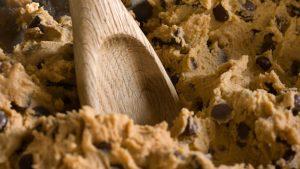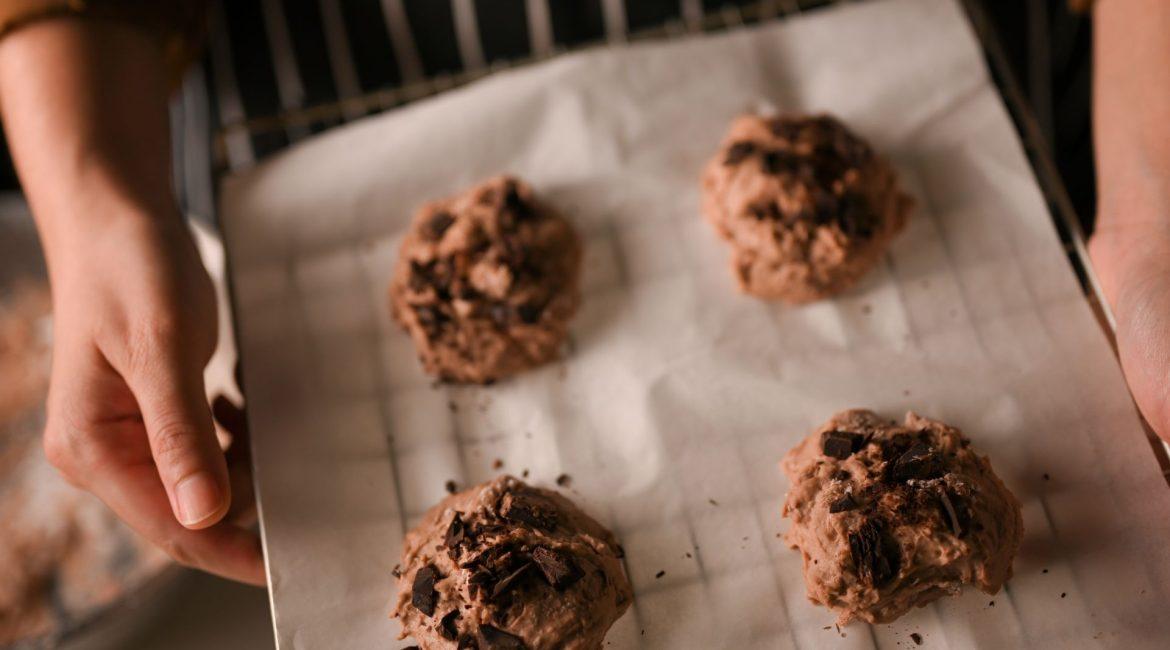Hey there, cookie enthusiasts! Are your homemade cookies turning out drier and crumblier than you’d like?
Well, fret not, because in today’s blog post, we’re diving into the art of cookie perfection.
We’ll unravel the secrets behind achieving that soft, tender, and melt-in-your-mouth texture that we all crave.
So, grab your apron and get ready to bake up some cookie magic!
Why Your Homemade Cookies Keep Crumbling: Common Culprits.
There could be several factors that contribute to your cookies crumbling. To address this issue effectively, it’s essential to consider each of these factors carefully:
Overbaking: Overbaking your cookies can cause them to become dry and crumbly.
Make sure you follow the recommended baking time in your recipe and consider using an oven thermometer to ensure your oven temperature is accurate.
Overmixing: Overmixing your cookie dough can lead to the development of too much gluten, resulting in a tougher, crumbly texture.
Mix your dough until just combined to avoid this issue.
Incorrect Flour Measurement: Using too much flour or not measuring it accurately can make your cookies dry and crumbly.
Use the spoon-and-level method to measure your flour correctly, which involves spooning the flour into the measuring cup and leveling it off with a flat edge.
Inadequate Fat: Cookies require fat for moisture and tenderness. Ensure you’re using the right amount of butter, margarine, or oil specified in your recipe.
Lack of Moisture: If you’re baking in a very dry environment, or if you live in a dry climate, you may need to adjust your recipe slightly by adding a touch more liquid, like milk or water, to prevent your cookies from becoming too dry and crumbly.
Overworked Dough: Handling the cookie dough too much or rolling it into tight balls can cause the cookies to be crumbly.
Try to handle the dough as little as possible and shape it gently.
Using the Wrong Flour: Different types of flour have varying protein contents, which can affect the texture of your cookies.
All-purpose flour is typically suitable for most cookie recipes, but if a recipe calls for a specific type of flour (e.g., cake flour), make sure to use the recommended one.
Improper Storage: If you don’t store your cookies properly, they can become dry and crumbly.
Store them in an airtight container at room temperature or add a slice of bread to the container to help maintain moisture.
Ingredient Substitutions: Be cautious about making ingredient substitutions in your recipe, as they can impact the texture.
Stick to the ingredients listed in the recipe for the best results.
Altitude: If you live at a high altitude, you may need to make adjustments to your recipe, as changes in air pressure and humidity can affect baking.
Consult high-altitude baking guides for specific recommendations.
By addressing these potential factors, you can improve the texture of your cookies and prevent them from crumbling.
Remember that practice and experimentation can also help you achieve the perfect cookie consistency over time.
Let’s delve deeper, let me explain these points mentioned further.

First, let’s delve deeper into the issues of overbaking and overmixing when making cookies and how they can affect the texture of your baked goods:
1. Overbaking.
Overbaking refers to leaving your cookies in the oven for a longer time than what’s recommended in the recipe. It can result in several problems:
Dryness:
Cookies contain moisture, typically from ingredients like butter, eggs, and sugar.
When they bake, this moisture turns into steam and helps keep the cookies soft and tender. If you bake cookies for too long, they can lose this moisture, leading to dry and crumbly results.
Browning:
Extended baking can also cause cookies to brown excessively, potentially leading to a bitter or burnt flavor.
Texture:
Overbaked cookies tend to be overly crisp and brittle, breaking apart easily when you try to bite into them.
2. Overmixing:
When you overmix cookie dough, you are essentially working the gluten in the flour too much.
Gluten is a protein that forms when flour comes into contact with liquid and is responsible for the structure and elasticity in baked goods like bread.
However, in cookies, you usually want minimal gluten formation for a tender texture.
Here’s how overmixing affects cookies:
Toughness:
Excess gluten development can make your cookies tough and chewy, rather than soft and crumbly.
Reduced Spread:
Overmixed dough tends to spread less during baking, resulting in thicker and denser cookies.
Airiness:
Cookies with too much gluten can become cakey or have an undesirable cake-like texture, which is not what most people expect in a classic cookie.
To avoid overmixing:
Mix your ingredients until they are just combined. This means mixing until you no longer see streaks of flour, but don’t keep stirring beyond that point.
Use a gentle hand when incorporating dry ingredients into wet ingredients. You can even fold them in with a spatula instead of using a mixer.
If your recipe involves adding flour, it’s a good practice to add it gradually in portions, mixing briefly after each addition.
This helps evenly distribute the flour without overmixing.
By being mindful of these factors and following recommended baking times and mixing techniques, you can achieve the desired soft and crumbly texture in your cookies.
Let’s dive deeper into the importance of correct flour measurement and ensuring adequate fat when making cookies:
3. Incorrect Flour Measurement.
Accurate flour measurement is crucial in baking because even a slight variation in the amount of flour can significantly affect your cookie’s texture.
The spoon-and-level method is a reliable way to measure flour correctly. Here’s how it works:

Use a dry measuring cup specifically designed for dry ingredients.
First, fluff up the flour in its container with a spoon.
Then, spoon the flour gently into the measuring cup, filling it slightly above the rim.
Finally, level off the excess flour with a flat edge, such as the back of a knife.
This method ensures that you’re not packing the flour into the cup, which can lead to an excess of flour in your recipe. Too much flour results in a drier and denser cookie.
4. Inadequate Fat.
Fat, usually in the form of butter, plays a crucial role in cookies by providing moisture and tenderness. Here’s why it matters:
Moisture:
Fat, when heated in the oven, melts and turns into liquid. This liquid fat disperses throughout the cookie dough, providing moisture and preventing the cookies from becoming dry and crumbly.
Tenderness:
Fat also contributes to the tenderness of cookies. It coats the flour particles, inhibiting gluten formation and yielding a more delicate, crumbly texture.
Flavor:
Fat carries and enhances the flavor of cookies. It helps distribute the flavor compounds, making your cookies taste rich and delicious.
To ensure you have the right amount of fat:
Always follow the recipe’s measurements for butter, margarine, or oil precisely.
If the recipe specifies melted butter, measure it after melting to ensure accuracy.
Use the type of fat indicated in the recipe, as different fats can yield slightly different textures and flavors.
By measuring your flour accurately and using the correct amount of fat as specified in your recipe, you’ll help ensure that your cookies turn out moist, tender, and with the desired crumbly texture.
These are essential steps in achieving delicious homemade cookies.
Let’s explore the issues of lack of moisture and overworked dough in the context of making cookies:
5. Lack of Moisture.
The moisture content in your cookie dough is crucial for achieving the desired texture.
In dry environments or climates, the lack of ambient moisture can affect your cookie dough. Here’s how and why it happens:
Dry Air:
In a dry environment, the moisture in your dough can evaporate more quickly during baking, leading to cookies that turn out drier and crumbly.
Solution:
If you’re baking in a dry climate, or if your dough seems dry, consider adding a bit more liquid to your cookie dough.
This can be in the form of milk, water, or even a small amount of extra fat (like melted butter) to ensure that your cookies have adequate moisture.
Add a little at a time until you reach the desired dough consistency.
6. Overworked Dough.
Overworking cookie dough means handling it too much or mixing it excessively, which can negatively impact the cookie’s texture.
Here’s why it’s a concern:
Gluten Formation:
When you mix or handle the dough vigorously, you encourage the formation of gluten, which is a protein that provides structure and elasticity.
However, in cookies, you generally want minimal gluten formation for a tender texture.
Texture Impact:
Overworked dough can result in cookies that are tougher, chewier, or even cakey, depending on the extent of gluten development.
Shape and Spread:
Overworked dough may not spread properly during baking, leading to thicker and denser cookies.
To avoid overworking cookie dough:
Mix your ingredients until just combined. This means blending the wet and dry ingredients until there are no visible streaks of flour, and then stopping.
Be gentle when incorporating dry ingredients into wet ingredients. Use a spatula or a wooden spoon to fold the ingredients together rather than using a mixer, which can be more aggressive.
When shaping the dough into cookies, handle it as little as possible.
Use a light touch to form dough portions into balls or drop them onto the baking sheet. Avoid pressing the dough too firmly or rolling it tightly.
By addressing the lack of moisture in dry environments and handling your cookie dough with care to prevent overworking it, you can help ensure that your cookies maintain the desired texture—soft, crumbly, and delicious.
Let’s explore the importance of using the right flour and proper storage when making cookies:
7. Using the Wrong Flour.
Different types of flour have varying protein contents, which directly impacts the texture of your cookies.
All-Purpose Flour:
All-purpose flour is a versatile choice and is suitable for most cookie recipes.
It has a moderate protein content, which strikes a balance between tenderness and structure.
It’s a safe option if a recipe doesn’t specify a particular type of flour.
Cake Flour:
Cake flour has the lowest protein content among common flours. It results in cookies that are very tender and delicate.
If a recipe calls for cake flour, it’s essential to use it as using all-purpose flour may yield a different texture.
Bread Flour:
Bread flour has a higher protein content and is typically used for bread recipes. Using it in cookies can lead to a chewier and denser texture, which might not be desirable for most cookie varieties.
8. Improper Storage.
Proper storage is crucial for maintaining the freshness and texture of your cookies. Here’s why it matters:
Moisture Control:
Storing cookies in a humid environment can make them overly soft, while storing them in a dry place can make them dry and crumbly.
Airtight Containers:
Use airtight containers to store cookies. This helps seal in moisture and prevents them from becoming stale or absorbing odors from their surroundings.
Moisture Source:
Adding a slice of bread to the container is a clever trick. The bread can release a bit of moisture, which can help maintain the cookies’ softness. However, remember to replace the bread slice when it becomes stale.
Avoid Refrigeration:
Avoid storing cookies in the refrigerator, as it can cause them to become too firm and lose their freshness.
To ensure you’re using the right flour and storing cookies properly:
Read your recipe carefully and use the type of flour specified. If the recipe doesn’t specify, all-purpose flour is usually a safe choice.
Invest in airtight containers or cookie tins to store your cookies. Ensure they are clean and dry before placing the cookies inside.
If you live in a particularly dry or humid climate, adjust your storage method accordingly to maintain the desired cookie texture.
By choosing the correct flour for your recipe and storing your cookies properly, you can help ensure that they maintain their intended texture and stay fresh for a more extended period.
This attention to detail will result in more enjoyable and delicious cookies.
let’s delve into the potential issues related to ingredient substitutions and the impact of altitude on baking:
9. Ingredient Substitutions.
Ingredient substitutions can significantly impact the texture, flavor, and overall success of your cookies. Here’s why it’s important to be cautious:
Flavor and Texture:
Substituting one ingredient for another can change the flavor and texture of your cookies.
For instance, using a liquid sweetener instead of granulated sugar can add extra moisture and affect the texture.
Chemical Reactions:
Baking is a precise science, and many ingredients interact with each other in specific ways.
For example, baking soda and baking powder are leavening agents that react with acidic ingredients to help cookies rise.
Substituting or omitting these ingredients can lead to cookies that don’t spread or rise correctly.
Allergies and Dietary Restrictions:
While substitutions may be necessary for dietary reasons, such as gluten-free or dairy-free diets, it’s essential to use appropriate alternative ingredients and follow recipes designed for specific dietary needs.
To avoid issues with ingredient substitutions:
If you need to make substitutions, look for recipes specifically designed for those ingredients or dietary requirements.
Be aware of the role each ingredient plays in the recipe and how it may affect the final product.
Experiment cautiously, as substitutions may require adjustments to other ingredients or baking times.
10. Altitude.
Altitude, or elevation above sea level, can have a significant impact on baking due to changes in air pressure and humidity. Here’s how it can affect your cookie recipe:
Leavening:
At higher altitudes, the reduced air pressure can cause leavening agents like baking soda and baking powder to work more vigorously.
This can lead to cookies that rise and spread too much, resulting in a thinner and drier texture.
Drying Out:
In drier and lower-pressure environments, cookies can lose moisture more quickly during baking, making them drier and crumbly.
Cooking Times:
Baking times may need to be adjusted because of the lower boiling point of water at higher altitudes, which affects the baking process.
To adapt your cookie recipes for high-altitude baking:
Consult high-altitude baking guides or resources specific to your altitude level, as adjustments can vary depending on how high you are.
Common adjustments may include reducing the amount of leavening agents, increasing liquid or fat, and adjusting baking temperatures and times.
Keep an eye on your cookies and be prepared to make trial-and-error adjustments to achieve the desired texture and flavor.
By being mindful of ingredient substitutions and considering the impact of altitude on your baking, you can achieve better results and maintain the desired texture and flavor in your cookies, regardless of your specific baking conditions or dietary needs.
A complete tabular on this topic here.
Here’s a complete table summarizing the factors that can make your cookies crumble:
| Factor | Explanation | How to Address |
|---|---|---|
| Overbaking | Baking cookies for too long can remove moisture, leading to dry and crumbly texture. | Follow recommended baking times; use an oven thermometer. |
| Overmixing | Excessive mixing develops gluten, resulting in a tough, crumbly texture. | Mix dough until just combined; use gentle stirring. |
| Incorrect Flour Measurement | Using too much flour can lead to a dense, crumbly cookie. | Use the spoon-and-level method; measure accurately. |
| Inadequate Fat | Not enough fat can make cookies dry and lacking in tenderness. | Ensure correct fat quantity as per the recipe. |
| Lack of Moisture | Baking in dry environments can make cookies crumble due to moisture loss. | Adjust by adding a bit more liquid to the dough. |
| Overworked Dough | Excessively handling or mixing dough creates too much gluten, resulting in a tough texture. | Handle dough gently; avoid overmixing and overworking. |
| Using the Wrong Flour | Different flours have varying protein levels, affecting texture. | Use the specified flour or all-purpose as appropriate. |
| Improper Storage | Incorrect storage can lead to moisture loss, making cookies dry and crumbly. | Store in airtight containers; avoid refrigeration. |
| Ingredient Substitutions | Substituting ingredients without understanding their roles can alter texture and flavor. | Follow recipes carefully; use appropriate substitutions. |
| Altitude | High altitudes can affect baking due to air pressure and humidity changes, resulting in texture issues. | Consult high-altitude baking guides for adjustments. |
By addressing these factors and following the recommended solutions, you can maintain the desired texture of soft, tender, and non-crumbling cookies in your baking endeavors.
Conclusion.
In conclusion, achieving cookies with the perfect texture, avoiding crumbliness, involves careful attention to various factors, such as baking time, mixing techniques, flour measurement, moisture control, and proper storage.
Additionally, being cautious with ingredient substitutions and considering altitude-related adjustments can contribute to consistently delicious and well-textured cookies.

Whether you’re a passionate baker or simply seeking sweet inspiration, I’m here to provide you with valuable insights, mouthwatering recipes, expert tips, and more to make your cookie adventures with Mike truly delightful and scrumptious. You are on the true exciting cookie-filled side.




